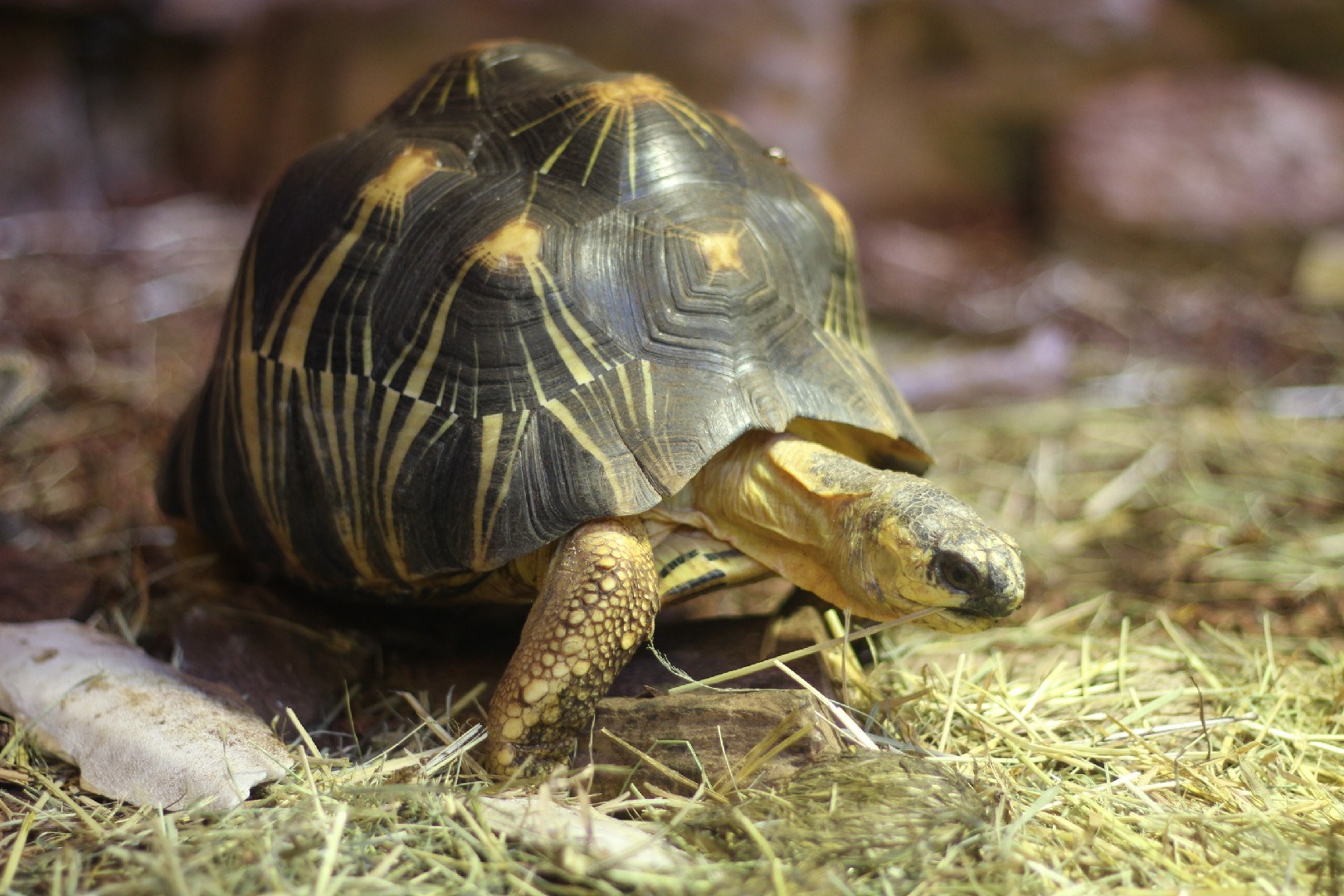Radiated tortoise
A species of Astrochelys Scientific name : Astrochelys radiata Genus : Astrochelys
Radiated tortoise, A species of Astrochelys
Scientific name: Astrochelys radiata
Genus: Astrochelys
Content
Description General Info
 Photo By Przemek Pietrak , used under CC-BY-SA-3.0 /Cropped and compressed from original
Photo By Przemek Pietrak , used under CC-BY-SA-3.0 /Cropped and compressed from original Description
Growing to a carapace length of up to 16 in (41 cm) and weighing up to 35 lb (16 kg), the radiated tortoise is considered to be one of the world's most beautiful tortoises. This tortoise has the basic "tortoise" body shape, which consists of the high-domed carapace, a blunt head, and elephantine feet. The legs, feet, and head are yellow except for a variably sized black patch on top of the head. The carapace of the radiated tortoise is brilliantly marked with yellow lines radiating from the center of each dark plate of the shell, hence its name. This "star" pattern is more finely detailed and intricate than the normal pattern of other star-patterned tortoise species, such as Geochelone elegans of India. The radiated tortoise is also larger than G. elegans, and the scutes of the carapace are smooth, and not raised up into a bumpy, pyramidal shape as is commonly seen in the latter species. Sexual dimorphism is slight. Compared to females, male radiated tortoises usually have longer tails and the notches beneath their tails are more noticeable. 
General Info
Lifespan
100-188 years
Diet
Radiated tortoise's primary diet consists of various succulent plants, capturing a significant portion of its total food consumption. This herbivore also consumes fallen fruits and occasional invertebrates, demonstrating an adaptable dietary behavior.
Appearance
Radiated tortoise presents with a high-domed carapace featuring distinct radiating patterns of yellow lines on a dark background. A medium-sized tortoise, it possesses a sturdy body and thick, stumpy legs, designed for ground-dwelling life. Its unique shell, measuring up to 16 inches in length, is the most striking feature. Both male and female look similar; however, males generally have a longer tail.
Behavior
Radiated tortoise exhibits solitary, diurnal behaviors, foraging primarily on leafy vegetation. It often burrows for thermoregulation and safety. Radiated tortoise is known for its unique shell-hitting combat, a territorial display seen during the long mating season. Not a migratory species, radiated tortoise adapts well to its arid habitat.
Population
Decreasing
Scientific Classification
Phylum
Chordates Class
Reptiles Order
Testudines Family
Tortoises Genus
Astrochelys Species
Radiated tortoise